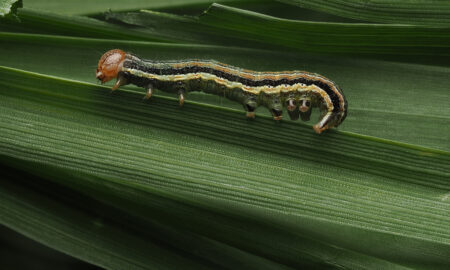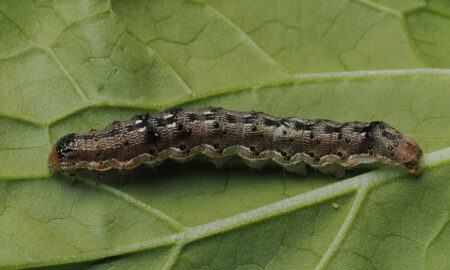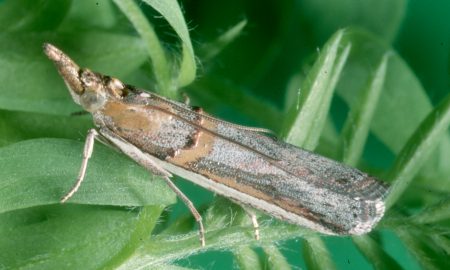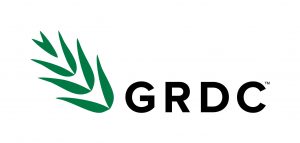In late October, we received a report of large Helicoverpa armigera larvae in a canola crop near Cootamundra, in the South West Slopes of New South Wales.
The activity of this pest is earlier than usual for the region.
Here, we unpack why H. armigera could be active in southern regions earlier this year, and what it means for management decisions.
The biology of Helicoverpa species in the southern cropping regions
Two Helicoverpa species affect broadacre crops in southeastern Australia during spring and summer:
Helicoverpa punctigera (native budworm), which migrates from inland regions each spring, and H. armigera (corn earworm/cotton bollworm), which typically emerges from local overwintering pupae.
H. punctigera arrives first in these cropping regions, typically during August and September. During winter, H. punctigera breeds in the arid inland of Australia on ephemeral native vegetation. Eventually, these plants senesce and these moths, which can migrate vast distances, arrive in Victoria and southern NSW.
H. armigera doesn’t appear in large numbers until spring temperatures have warmed enough for pupal emergence.
In one study, which monitored the emergence of H. armigera near Griffith in southern NSW, it was found that moth emergence occurred mostly between mid-October to mid-November.
By the time H. armigera has the chance to emerge and breed, southeastern winter-sown crops are usually dried out or harvested. Hence, H. punctigera is usually the species of concern in southern NSW and Victoria for maturing grain crops in spring.
The exception to this is central areas of NSW (and certainly northern cropping regions), or in an extended season if crops are still green in early December, in which case both species can be present in maturing winter-sown crops.
Moth activity detected
This spring, a pheromone trap in Wagga Wagga, run by NSW DPIRD, recorded unusually high H. armigera catches, with 345 moths detected in the week ending 12 September.
Given that H. armigera usually emerges locally later in the spring, this level of activity so early is unusual. So then why were large numbers of H. armigera moths caught in pheromone traps in southern New South Wales in early to mid-September?
While H. armigera are not as migratory as H. punctigera, they still can fly long distances. And as there are areas in the northern cropping regions where H. armigera emerge early in spring or even persist year-round, there could be some migration from north to south.
The significance of the report of larvae
Though the pheromone trap showed a presence of H. armigera moths earlier than expected in the NSW Riverina, it was unclear if local conditions were optimal for breeding, egg hatch and larval development.
It is not unusual for moths to migrate to an area with conditions unsuitable for eggs and larvae to survive.
But the recent report of large H. armigera larvae near Cootamundra shows that early spring migrations can, at least in some seasons, result in ensuing larval populations in more southern winter cropping regions such as the South West Slopes.
This is important, as H. armigera has evolved resistance to several insecticide mode of action groups, and H. punctigera have not – and they look almost identical.
How do you know if you have H. armigera larvae?
Correct identification is key to choosing effective control options and insecticide stewardship.
There are two features to look out for when distinguishing H. punctigera larvae from H. armigera:
- The dark ‘saddle’ on the fourth body segment on H. armigera. This is absent on native budworm.
- The colour of the hairs in the first row after the head capsule. H. punctigera has black hairs, whereas H. armigera has white hairs. You will require a hand lens or macro camera lens to view this feature.
In images sent to our Pestfacts Southeastern team of H. armigera in Cootamundra, both features were subtle but visible.
It is important to note that these indicators are not always reliable; sometimes the dark saddle can be absent or diminished on H. armigera. They are also often only visible on larger caterpillars (both species are best controlled while they are small – up to 7 mm in length).
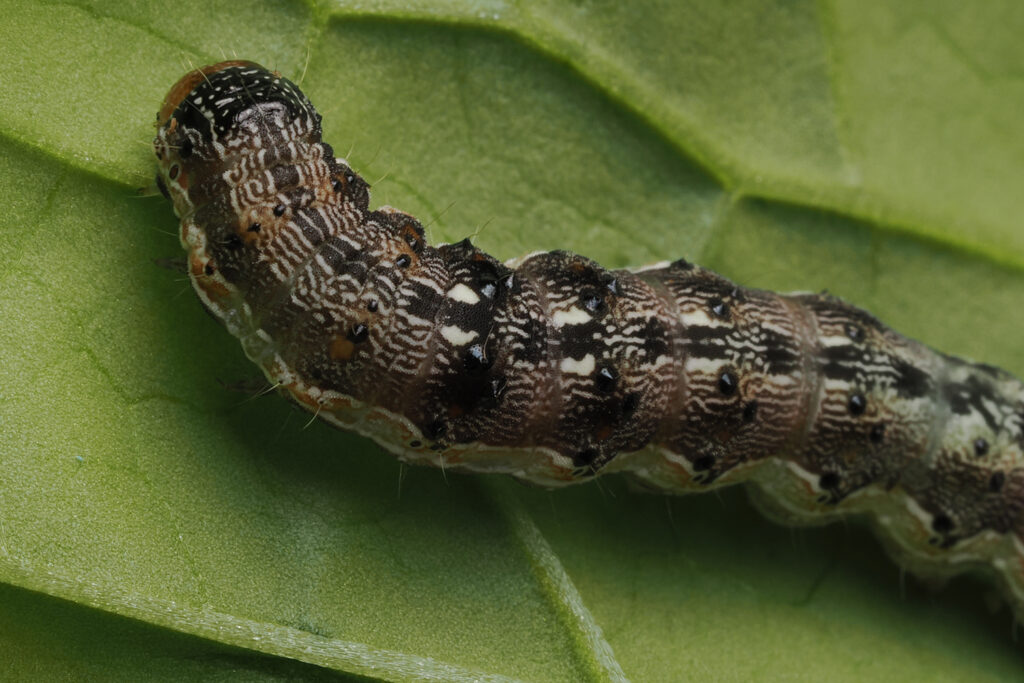
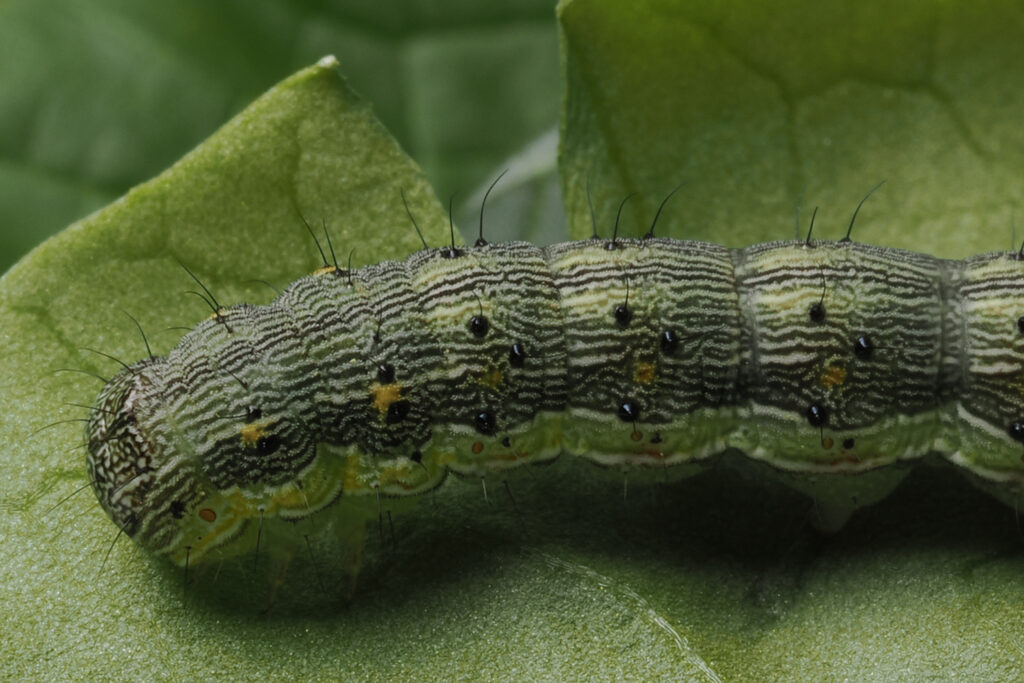
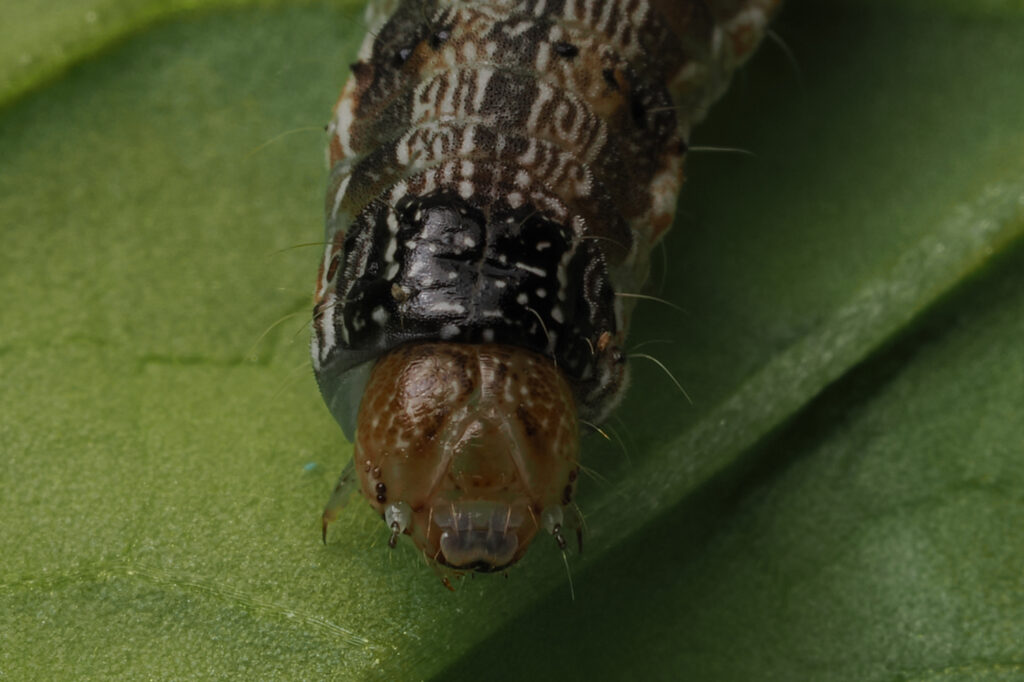
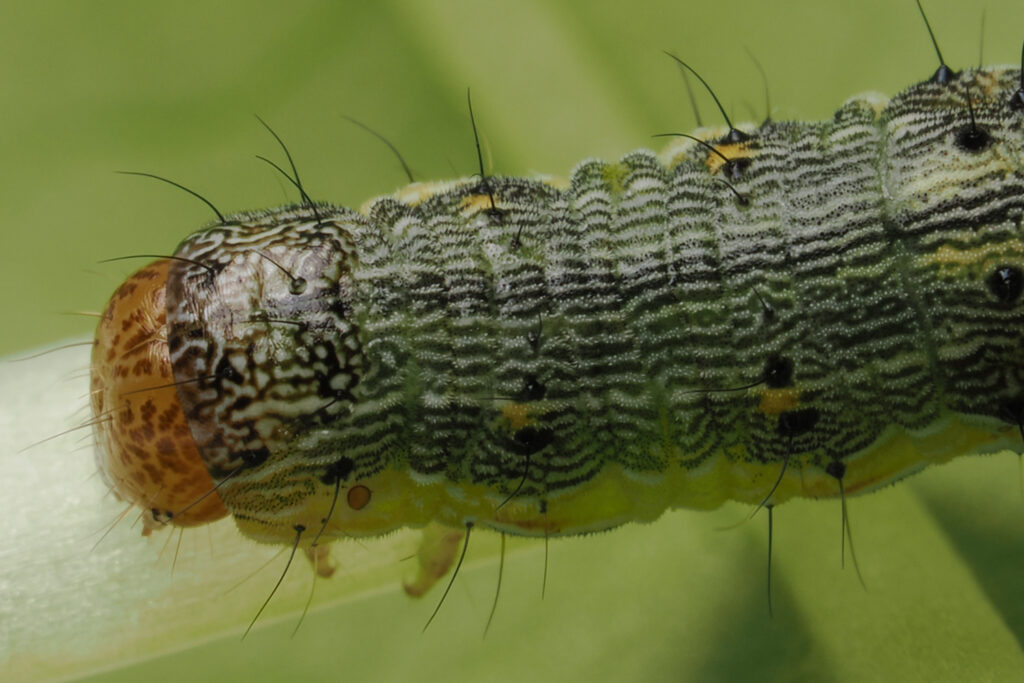
What to do if H. armigera is present
If you have mixed populations of H. punctigera and H. armigera and control is warranted, we encourage you to refer to the ‘Resistance management strategy for Helicoverpa armigera in Australian grains’.
Alternatively, feel free to get in contact with our Pestfacts Southeastern team and we can talk about what’s happening in your paddocks.
Cover image: Photo by Julia Severi, Cesar Australia


